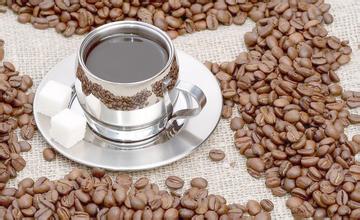What is the relationship between coffee sour, sweet, salty and bitter and roasting-an introduction to the blending of Italian coffee
What is the relationship between coffee sour, sweet, salty and bitter and roasting-an introduction to the blending of Italian coffee
① moderate baking bitterness (chlorogenic acid lactone)
② deeply baked bitterness (vinyl catechol oligomer).
① is the so-called "authentic bitter coffee."
② is the bitterness of deep-roasted coffee such as espresso.
Therefore, medium and deep baking is an intermediate flavor between ① and ②.
The bitter taste of ① is mild, and people who are afraid of bitterness can easily accept it. If the roasting is medium and deep, even if there is such a bitter taste, some people will still think that "this coffee is not bitter at all and easy to drink." Having said that, since bitterness is bitter after all, it will still be unbearable if it is too strong.
When most of the ② is combined, it becomes a "vinyl catechol polymer" (bitter taste), which is defined here as a "bad scorched taste".
② 's vinyl catechol oligomer may be just one step away from the "bad charred smell".
I'm afraid it will bother you if you don't express it properly. The question is, why did all the bakeries in the past aim at deep-roasted coffee?
This may be a way to avoid a sandwiched astringency in the coffee.
"the bitterness of coffee is roughly divided into two types. That is, 'moderate baking bitterness' and 'deep baking bitterness'.
The chlorogenic acid lactone produced by chlorogenic acid is moderately baked bitterness, and the vinyl catechol polymer produced by caffeic acid is deeply baked bitter taste, which is a kind of bitterness with scorched and bitter taste. The coffee baked by moderate roasting with failed moisture removal will be very astringent, and if it is further roasted into deep roasting, it will produce a more pungent bitter taste and become a slightly stronger flavor than astringency. So, did everyone take the name of deep baking pie?

Important Notice :
前街咖啡 FrontStreet Coffee has moved to new addredd:
FrontStreet Coffee Address: 315,Donghua East Road,GuangZhou
Tel:020 38364473
- Prev

Introduction of how to make the difference between espresso and American coffee
How to make the difference between espresso and American coffee the higher the brewing water temperature, the lower the sour taste, the higher the bitter and scorched taste, the lower the water temperature, and the higher the acidity, the lower the bitter and scorched taste, so the ideal water temperature should be adjusted according to different beans and formulations, such as lower water temperature for deep baking and higher water temperature for shallow baking. My most commonly used water temperature is 91 degrees. The control of water temperature is great.
- Next

-what's the capacity of a latte?-is a matcha latte coffee?
What is the general capacity of latte-matcha latte is coffee? espresso is made by letting hot water flow through a handful of fine coffee powder under high pressure, with high caffeine concentration and coffee fat. The dripping coffee is to let the boiling water through the coarse ground coffee powder, the caffeine concentration is low, basically does not contain coffee fat, is more suitable for drinking in large quantities. Fourth, latte (
Related
- Beginners will see the "Coffee pull flower" guide!
- What is the difference between ice blog purified milk and ordinary milk coffee?
- Why is the Philippines the largest producer of crops in Liberia?
- For coffee extraction, should the fine powder be retained?
- How does extracted espresso fill pressed powder? How much strength does it take to press the powder?
- How to make jasmine cold extract coffee? Is the jasmine + latte good?
- Will this little toy really make the coffee taste better? How does Lily Drip affect coffee extraction?
- Will the action of slapping the filter cup also affect coffee extraction?
- What's the difference between powder-to-water ratio and powder-to-liquid ratio?
- What is the Ethiopian local species? What does it have to do with Heirloom native species?

